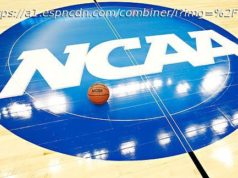Calling her « openly gay » invalidates what she herself has said for years.
When Cynthia Nixon announced her candidacy for governor of New York, a narrative quickly emerged. A Sex and the City actor would be running for one of the most powerful offices in the state on the platform of fixing the damn subways — and could very well become the first female, openly gay governor in the state’s history.
The New York Times said it; The Guardian said it; even Vox said it. The only problem with that narrative, though? Nixon isn’t, in fact, openly gay.
Nixon has been upfront about the fact that she identifies as being far more on the bisexual end of the spectrum — and also about how that fact often gets lost in favor of black-and-white proclamations about her sexuality.
When Nixon began dating Christine Marinoni in 2004 after dating a man for 15 years, it was largely treated as the coming out story of a woman who realized late in life that she’s a lesbian. But Nixon herself was always clear that her attraction to her ex-boyfriends was as real as hers to Marinoni, who is now her wife.
“In terms of sexual orientation I don’t really feel I’ve changed,” she told the Telegraph in 2008. “I don’t feel there was a hidden part of my sexuality that I wasn’t aware of. I’d been with men all my life, and I’d never fallen in love with a woman. But when I did, it didn’t seem so strange. I’m just a woman in love with another woman.”
In 2012, Nixon stumbled into controversy when she told the New York Times that her relationship with Marinoni was “a choice,” which to many implied that she was playing into the pernicious trope that queer people can turn their queerness on and off whenever they want. “I understand that for many people it’s not, but for me it’s a choice,” she said, “and you don’t get to define my gayness for me.” She was, she added, “very annoyed about this issue.”
The reason why (and the context for her “choice” comment) made more sense with a little more explanation — which, as Nixon quickly learned, was constantly asked of her no matter the purported subject of the interview. Though she clarified in a statement that she believes “bisexuality isn’t a choice” and that her relationship with a woman is, she later told the Huffington Post that she was frustrated because “people were so insistent” that she must identify as gay, that she “had just simply been mistaken about myself for all these years and finally the veil was lifted and I was a lesbian.” That narrative, she maintained, was just “not true.”
Nixon is far from alone in being frustrated that people look at her relationship and decide her sexuality for her, therefore erasing the actual truth. Bisexual, pansexual, and otherwise queer people are constantly having to reassert, explain, and justify our sexuality so that it doesn’t become invisible. For men, coming out as bisexual is often seen as just a temporary speed bump on the way to coming out as gay; for women, bisexuality is often treated as nothing more than a sexy experiment. Those in relationships with someone of another gender are read as straight; those in relationships with someone of the same gender are read as gay.
When you don’t identify as either straight or gay, there’s rarely any explanation you can give to satisfy people — and Nixon knows it.
“I think for gay people who feel 100 percent gay, it doesn’t make any sense. And for straight people who feel 100 percent straight, it doesn’t make any sense,” Nixon told The Daily Beast’ s Kevin Sessums with more than a little bit of exasperation in 2012. “I don’t pull out the ‘bisexual’ word because nobody likes the bisexuals. Everybody likes to dump on the bisexuals.”
“But it is the ‘B’ in LGBT,” Sessums said.
“I know,” Nixon replied, “but we get no respect.”
Nixon then went out of her way to emphasize a crucial point that often gets lost when people are confronted with a coming out story that doesn’t, for lack of a better term, pick sides. “I do completely feel that when I was in relationships with men, I was in love and in lust with those men. And then I met Christine and I fell in love and lust with her,” she said. “I am completely the same person, and I was not walking around in some kind of fog.”
Over the years, Nixon’s indignant responses to questions about her sexuality have become more dismissive than anything else. When promoting her Emily Dickinson biopic in 2017, Nixon again remarked that people “don’t really believe in” bisexuality, but also shrugged that “there are worse problems out there in the world than whether people get the exact shade of my sexuality.” That’s true, but honestly, who can blame her for taking a step back given all the grief she got for trying to clarify her own sexuality?
Whether from the world at large or our own internalized shame, bisexual people are constantly told that our sexuality is a result of “some kind of fog” that, once lifted, will reveal a stark “gay” or “straight” truth. And even if we don’t buy into that, others will gladly do it for us, assigning us to one box or another solely based on who they see us dating. But this kind of assumption, as Nixon puts it, is simply not true.
So when someone tells you they’re bisexual or queer, go ahead and skip the mental gymnastics of trying to make them fit into a gay and straight dichotomy. It’s so much simpler to just believe queer people when they say that they know themselves.






